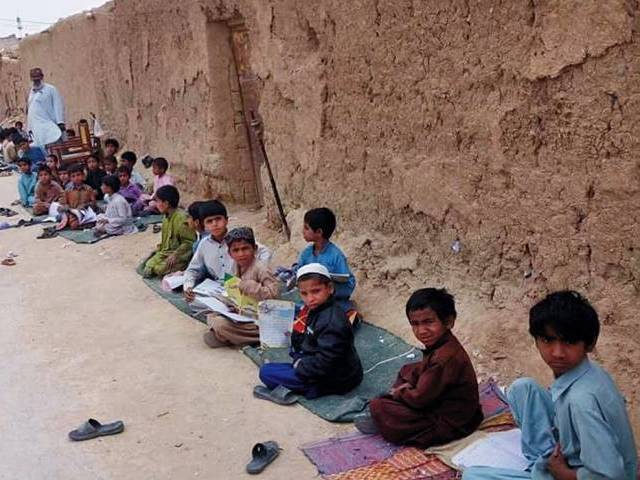
The scale of the disaster is once again revealed by Alif Ailaan, which has produced the Pakistan District Education Ranking 2016 and it is dismal reading, revealing if nothing else that money alone is not going to either alleviate or even mitigate the crisis, with the disaster having reached proportions that are close to being an existential threat, arguably greater than extremism or terrorism. It is the serial failure of successive governments to maximise the potential of education that has ultimately led to a culture of mediocrity that stretches from the kindergarten all the way into higher education, and it is getting worse by the year.

The big-picture numbers and values are stark. There are 25 million boys and girls out of school or almost half of all children, nationally. Those that do go to government schools get a poor-quality education that does nothing to prepare them for the workplace or the much-trumpeted ‘knowledge economy’. Around 48 per cent of government schools lack the ‘four basics’ — furniture, toilets, boundary wall and electricity. Most do not have potable water either. On any day, 18 per cent of teachers are absent. Corporal punishment remains widespread and largely unchecked. Children have even been killed by their teachers. Education budgets are insufficient to affect the overall quality of education and maintain, what amounts to ‘marking time’, in many places, and even where funds are available, the capacity to spend them effectively by provincial governments is frequently short of the mark.
The Alif Ailaan report breaks down the picture, district by district and province by province. The disaster in Sindh is compounded by the fact that budgetary allocation has increased in each of the last four years yet the province sees the largest decrease nationally in learning scores in 2016 — money going backwards. There is a decline of almost two points in the Sindh education score and it remains at the bottom of national rankings. A large part of the problem is that for children who do go to school and complete primary level, there is nowhere for them to go — because 91 per cent of all schools in the province are at primary level. Children leave school early, go into poorly-paid jobs and have few prospects of improvement — institutionalised mediocrity. Basic functional literacy is far below what the modern jobs market is looking for.
Most of the solutions are neither innovatory nor rocket science, and they are the same for every district and province nationally. Improve the facilities at schools — desks and chairs rather than a rug on a dirt floor, and toilets for girls. Teachers must be made accountable and their performance managed and monitored. Poor teachers produce poor students. Good teachers feed through to better student retention and learning. Teachers need to be taught how to teach — invest in teacher training and make teachers themselves feel valued. District-level enrolment drives to bring out-of-school children into the education net will work if the infrastructure is there to back these drives — children will want to go to a school that is attractive, clean, well run and where they do not fear a beating — and parents will be happy to send their children to a safe and welcoming classroom.
The Alif Ailaan report, as in previous years, tells us nothing new, just how bad the situation really is. The crisis makes headlines for a couple of days, and then drops off the news curve and the disaster remains unaddressed. Pakistan is not a failed state, but a failure to fix education means that it has that potential. Be warned.
Published in The Express Tribune, May 27th, 2016.
Like Opinion & Editorial on Facebook, follow @ETOpEd on Twitter to receive all updates on all our daily pieces.












COMMENTS (5)
Comments are moderated and generally will be posted if they are on-topic and not abusive.
For more information, please see our Comments FAQ